$3 Is Simpler and Faster Than $2.75 Cash Fare

A $3 Metro cash fare could make fishing for quarters while holding up a bus mostly go away.
Photo from Wikicommons
The $2.75 flat fare just proposed by County Executive Dow Constantine is a big step forward for the simplicity of King County Metro's fare system.
But consider if the cash fare were $3 instead, with the electronic fare left at $2.75.
Paying $3 is simpler and faster than paying $2.75. You just pull out three dollars and slide it into the farebox. $2.75 involves either a two-step process of pulling out two dollar bills and then fishing for three quarters, or, fishing for eleven quarters.
The speed-up of paying in dollar bills only, in and of itself, should significantly reduce the time impact of cash fumbling, by removing the change element of the fumbling. That is before calculating the time savings from cash payers converting into ORCA tappers.
Having the two different fares doesn't create complication. Those paying the regular fare with cash would pay $3, any time, on any Metro bus. The fare for those paying with ORCA would be $2.75, any time, on any Metro bus. The actual cost to the ORCA tapper would be somewhere less than $2.75 if the rider is using a pass or has an electronic transfer from another transit ride within the previous two hours.
Seven other US bus agencies with smart cards charge higher cash fares than smart card fares, and all of their smart cards are much cheaper than the ORCA Card, which costs $5 to get.
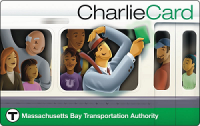 Massachusetts Bay Transportation Authority (Greater Boston) got it right: Its cash bus fares are $2 local, $5 inner express, and $7 outer express, while Charlie Card fares are $1.70 local, $4 inner express, and $5.25 outer express. It also doesn't have paper transfers and doesn't charge for getting a Charlie Card.
Massachusetts Bay Transportation Authority (Greater Boston) got it right: Its cash bus fares are $2 local, $5 inner express, and $7 outer express, while Charlie Card fares are $1.70 local, $4 inner express, and $5.25 outer express. It also doesn't have paper transfers and doesn't charge for getting a Charlie Card.
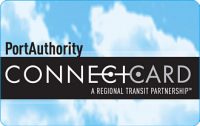
The Port Authority of Allegheny County (Pittsburgh) charges $2.75 for most cash-paying riders, and $2.50 if they pay with the Connect Card (which costs $1, and is the only way to get transfer credit).
.
 Sun Tran (Tucson) charges a 25-cent cash surcharge for regular fares and 15-cent cash surcharge for "Economy" fares. The SunGo Card is the only way to get transfers, but the card costs $2 to get, which ties it for third-most-expensive bus smart card in the country.
Sun Tran (Tucson) charges a 25-cent cash surcharge for regular fares and 15-cent cash surcharge for "Economy" fares. The SunGo Card is the only way to get transfers, but the card costs $2 to get, which ties it for third-most-expensive bus smart card in the country.
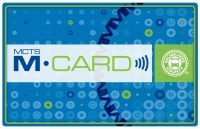
Milwaukee County Transit has a 50-cent surcharge on its regular adult fares and a $1 cash surcharge on its adult express fares. Its M"CARD also costs $2.
.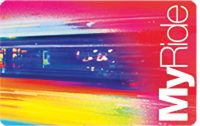 The Regional Transportation District (Greater Denver) has barely rolled out its MyRide Card, and already has 25-cent cash surcharges for all its regular fares and 15-cent cash surcharges for all its reduced fares. The MyRide Card is free with a minimum $5 purchase of fare product
The Regional Transportation District (Greater Denver) has barely rolled out its MyRide Card, and already has 25-cent cash surcharges for all its regular fares and 15-cent cash surcharges for all its reduced fares. The MyRide Card is free with a minimum $5 purchase of fare product
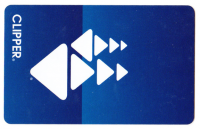
San Francisco Muni now has a 25-cent cash surcharge on adult fares and 10-cent cash surcharge on reduced fares. Clipper Cards remain free if you set up auto-reload (or $3 if you don't).
.
 Roughly half the bus smart cards in the US are free. The only bus smart cards in the US that cost more than $2 are the ORCA Card and Utah Transit Authority's FarePay Card, which costs $3. However, the card comes with a deep discount over cash fares, and riders can pay with their own contactless debit/credit cards. The FarePay discounts are set to go away at the end of the year, but they were set to go away before this year, and the promotion keeps getting extended.
Roughly half the bus smart cards in the US are free. The only bus smart cards in the US that cost more than $2 are the ORCA Card and Utah Transit Authority's FarePay Card, which costs $3. However, the card comes with a deep discount over cash fares, and riders can pay with their own contactless debit/credit cards. The FarePay discounts are set to go away at the end of the year, but they were set to go away before this year, and the promotion keeps getting extended.
Here, the ORCA LIFT (low-income fare) program's cash fare is the regular adult fare, which will soon be a flat $2.75 on both Metro and ST Express. The electronic fare is $1.50 on Metro buses, ST Express intra-county trips, Link Light Rail, the Seattle Streetcars, and likely soon the Seattle Center Monorail.
The King County Water Taxis also have cash surcharges.
During the summer youth ORCA promotion, Metro buses and the Seattle Streetcars charged only 50 cents when a youth ORCA card was tapped, while Sound Transit charged $1 when a youth ORCA card was tapped. The cash youth fare on both bus services remained $1.50. Metro and Sound Transit will analyze data from the promotion, and may subsequently come out with a proposal to reduce the youth electronic fares on a permanent basis (which is to say it would always be lower than the cash fare, not that the fare would necessarily be frozen forever), and reduce or eliminate the $5 fee for getting a youth ORCA card.
If Metro's regular cash fare were raised to $3, the LIFT cash fare would also rise to $3. That would just leave youth having to fish for quarters. Raising the youth cash fare to an even $2 or eliminating the youth cash fare (which would default it to $3) seems like a fare trade-off for reducing the youth electronic fare to $1 or less, so long as youth ORCA cards become free. Of course, if the youth fare comes down, it would seem fair to similarly reduce the LIFT fare.
The County Executive's proposal would leave Metro's fares looking like this:
| Payer Category | Cash Fare | Electronic Fare |
|---|---|---|
| Adult (Age 19-64) | $2.75 | $2.75 |
| LIFT (low-income card) | $2.75 | $1.50 |
| Youth (ages 6-18) | $1.50 | $1.50 |
| Senior 65+ / Disabled (with RRFP card) | $1 | $1 |
Differentiating the cash fare from the electronic fares could leave the fare system looking like this:
| Payer Category | Cash Fare | Electronic Fare |
|---|---|---|
| Adult (Age 19-64) | $3 | $2.75 |
| LIFT (low-income card) Youth (ages 6-18) | $3 | $1 |
| Senior 65+ / Disabled (with RRFP card) | $1 | $1 |
Metro's fares could get simpler than what is being proposed. Fare collection could get sped up much more than the ever-so-slight impact the $2.75 flat fare proposal will have on reducing dwell time.